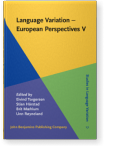Code-switching in SMS communication
Formal and functional aspects in the Swiss-German sms4science corpus
This study examines the formal and functional aspects of code-switching in a Swiss-German SMS (text messages) corpus of 10,706 messages. We investigate the types of codes used by the writers, the grammatical properties of the code-switched elements, and the potential functions of code-switching under the medium-specific conditions of SMS communication. We conclude that classical formal categories of code-switching and their usual functional interpretation need to be revised when it comes to analysing SMS data. It is necessary to broaden our understanding of the notion of a code in favor of other communicative codes, to extend classical formal code-switching categories in terms of isolated items, and to conduct multifactorial analyses when approaching functional aspects of code-switching.
